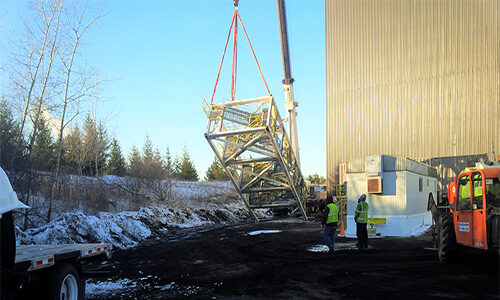
Guide to Successful Factory Relocations
Factory relocations are multi-process, complex operations, so developing a detailed plan is crucial before launching. Because delays, setbacks, and headaches are common during relocations, plant managers understand the importance of collaborating with experienced industrial contractors to achieve the best results.
Failure is no option. So, read on to learn the steps you must follow to ensure your next relocation is a success.
Gather Preliminary Information
Some plant managers don’t understand what’s needed to make their new facilities the most productive. They may not plan for robot installations, welding stations, or automation processes. They may forget to plan out new maintenance systems or to address hiring and training new staff members. A lack of forethought in any of these areas can lead to delays, unnecessary hassles, and cancellations, all of which end up costing more.
That’s why it’s so important to anticipate possible complications and setbacks. And you want to use a facility relocation as an opportunity to address pre-existing issues because you don’t want to carry over inefficient processes to the new location.
When gathering preliminary information, ensure you have details related to construction, environmental, human resources, legal, and manufacturing.
Develop Your Initial Plan & Layout
Planning the new layout earlier allows time to ensure capacity and growth are accounted for. More planning almost always equals a more efficient, less expensive, and successful experience. So, be sure to give yourself as much time as possible to plan the move.
The following are important steps for achieving a realistic plan of action.
- Evaluate the new location to strategize workstation and equipment positioning.
- Ensure you have accurate drawings of your existing and future factory space.
- Plan the positioning of overhead equipment, docking doors, walk paths, and utilities.
Share your drawings and plans with your contractors, and ensure all foundational, mechanical, and electrical constraints are addressed.
Set Targets
After you have completed your initial planning process, you’ll need to establish the scope and scale of the relocation and determine targets for investment and recurring costs, your total expected costs, and realistic timelines for production launch. It’s important to set these as early as possible to clearly understand the specific responsibilities and expectations of your key staff members, contractors, and vendors.
Create a Contigency Plan
Use the preliminary information you gathered in step one to identify known and potentially unknown impacts that can affect your relocation operation. It’s important to plan for these potential eventualities and understand beforehand how to adjust if and when they occur.
Production facility relocations are multifaceted, so difficulties, delays, and cost overruns are inevitable. You have to plan for them and have solutions ready to go. A solid contingency plan makes you much more likely to meet or exceed your targets.
Confirm Your Plan
At this stage, you should fine-tune every essential detail of your relocation project, then confirm the plan with all relevant parties. This will help to ensure that no problems have arisen since the last discussions and that the targets are still within reach.
Your plan should be an elaborate, clear outline that spells out your major goals with realistic timeframes. It’s reasonable to allocate up to 20% extra time for project completion to prevent and handle unforeseen setbacks.
Execute Your Plan
At this point, you have dedicated a lot of time and energy to developing and confirming a detailed execution plan. Now, it’s time to put your plan in motion. Here are a few key tips for ensuring a smooth roll-out:
- Distribute a professional blueprint to all your engineers, architects, and other key team members. Brief your entire team, ensuring they understand where each piece of equipment will be located at the new site.
- Create an all-department schedule for the week before the factory relocation, and be sure that everybody understands their precise roles in the process. Do your best to ensure accurate communications because miscommunication almost always leads to wasted time and money.
- Have product suppliers at your new location and an equipment commissioning system to help ensure an efficient, safe, and ready-for-operations launch.
- Ensure that your human resources staff understands the demographic differences between the old and new facility locations and that there’s a clear plan for the assimilation and advancement of new employees.
Remember—roll processes out slowly, and expand to full production as soon as possible.
Monitor & Adjust
It’s important to keep your plan flexible and adjust it as necessary to deal with unexpected issues. As your operations at the new facility progress, you can analyze production and gather real-time data to hone your processes. Unaddressed or misinterpreted scenarios will undoubtedly surface, yielding opportunities to adapt your methods and develop higher, safer production standards.
Trust Your Factory Relocations to CCI Industrial Constructors
Since 1995, the industrial riggers at CCI Industrial Constructors have provided highly successful factory relocations and machinery relocations for companies throughout the United States, Mexico, and Canada. We cater to the unique needs and requirements of our clients in the automotive, heavy industrial, manufacturing, power generation, and wastewater industries with efficient professionalism.
Contact us today to learn more about our capabilities or to schedule a project consultation. We’re here to help you achieve a seamless, cost-effective, headache-free facility and machinery relocation.
